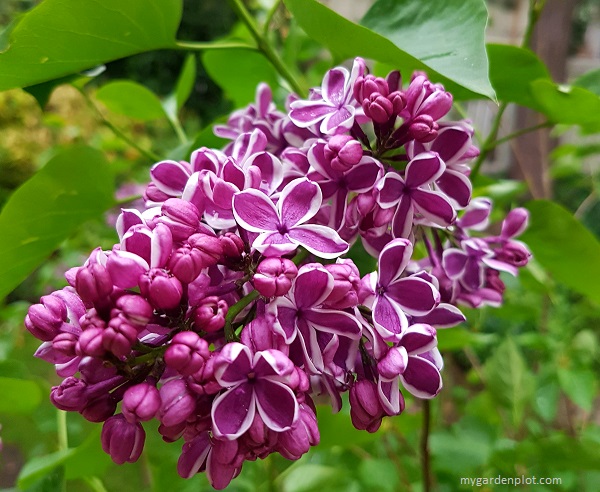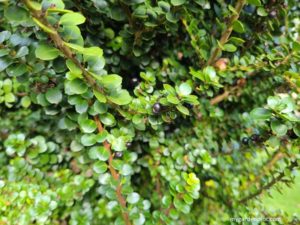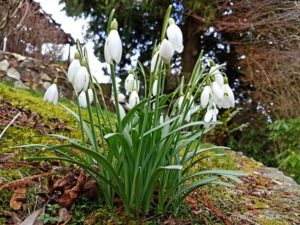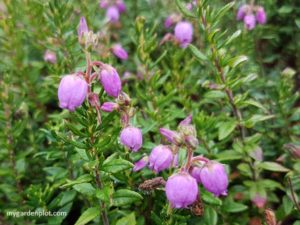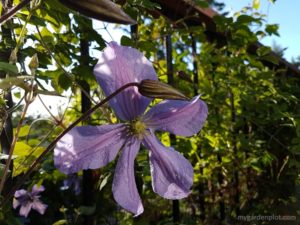About Syringa Oleaceae (Lilac) - Heavenly Scented Flowers
Universally adored, the scent from the lilac flower is spring’s seduction in any landscape. The lilac is a hardy, deciduous shrub that is often associated with beautiful old-fashioned country gardens. While lilac are low maintenance shrubs, knowing where to plant and how to care and prune your lilac, will ensure you have years of stunning late-spring and early-summer blooms in your garden.
It is no wonder why these popular shrubs, with its delightfully fragrant flowers and beautiful cluster of blooms, are often planted near windows and entrances, and garden pathways. And the lilac fragrance used in many personal care and home items. But not all lilac scents are equal. Generally, white and light hue lilacs have the most heavenly scented blossoms, such as the popular Beauty of Moscow Lilac. However, one of the less fragrant but spectacular purple colour displays is the Sensation Lilac. This is the one we selected. The beautiful colours (see photo above) makes it our favourite. It was a young plant when we first got it, and we had to wait three years before it flowered. It was worth the wait. Some lilacs can take up to five years, but typically most take three years to bloom.
Lilac At A Glance
Type: Deciduous perennial
Location: Full sun
Blooming season: Late spring / Early summer
When To Prune: Mid summer
Height: 4 – 10 ft (1.2 – 3 m)
Plant Hardiness Zones: 3, 4, 5, 6, 7, 8
Coldest temperature hardiness: -40°C to -34°C (-40°F to -30°F)
Where to Plant And How to Care For Lilac
Plant lilac in a sunny location, with good drainage fertile, humus-rich soil and space for good air circulation to deter powdery mildew. They can tolerate windy areas, and in our part of the world, we are glad they are deer resistant.
Deadheading will help keep your lilac looking tidy and in good condition once the blossoms are spent. Keep in mind that lilac flowers form in the previous season, so care must be taken not to damage new growth with next year’s blooms. In zones where winters are long and cold, lilacs seem to benefit from these chilly conditions to flower more profusely.
Though easy-care and long-lived, these shrubs may have some common pest problems and could be troubled with powdery mildew, which can be unsightly.

RELATED TOPIC: Buyer’s Guide On How To Choose Hand Pruners (Secateurs)
How To Prune Lilac
The hardy lilac is, for the most part, a low-maintenance deciduous shrub that requires little pruning. However, if you have a French Lilac plant, note that it will benefit from pruning one-third to one-half of its growth after flowering to control its spreading irregular habit. When choosing your lilac from the garden shop, keep in mind there is a variety offering different shapes and sizes. Some have a more compact or neater habit where little pruning is needed, such as the Meyer Lilac.
For most lilac shrubs, a little routine pruning midsummer will help promote flowering and new shoots. Cutting back to a healthy pair of buds will help produce flowers the following year and continue developing new stronger shoots.
Neglected lilacs can become overgrown with lots of bare wood and little display of flowers. Pruning helps to limit these straggly stems. For remedial hard pruning, plan to do this in winter, rather than in summer, when the shrub is dormant. Prune half of all the old stems back to about .5 metres (2 feet). Remove weak or think stems.
Tools Needed For Pruning Lilac
Below is the list of essential tools needed to prune your lilac shrub. For the most part you will only need hand pruner and a lopper. However if you have a mature lilac that has become congested, a pruning saw may be helpful too. The following links help narrow down the top-recommended products that are also available on Amazon:
- Pruners – Bypass pruners are the most popular choice for gardeners and a must in a pruner’s tool kit. Bypass means the blades pass each other in a scissorlike action providing a clean cut without splintering the stem’s edge. The anvil-type pruner, where the upper blade cuts against a lower flat edge, must always be kept sharp. Otherwise, it will crush the stem while trying to cut it. The best anvil-type pruners tend to be more expensive but worth it as they stay sharper for longer periods reducing the need to sharpen more frequently.
- Long-handled Loppers – These are similar to pruners but with long handles. These are heavy-duty and great for harder to reach stems that may also be too thick for pruners.
- Pruning Saw – Saws are useful for thick stems that are growing close together. A Grecian saw or Japanese-blade pruning saw is a handsaw with a curved edge that works with a pull-stroke action. Great for those stems that pruners and loppers can’t cut. It will need a protective case. We also recommend a folding hand saw with a pull-stroke action for smaller gardens. It looks similar to a large pocket knife and works in the same manner as a Grecian saw.
- Garden Gloves – Optional, though gardening gloves will help keep your hands clean and provide protection. Fabric gloves with vinyl offer a good grip on the fingers and palm. Good for warmer weather. For more challenging jobs, a pair of suede or leather gloves go a long way. Not too comfortable in warmer weather, though.

